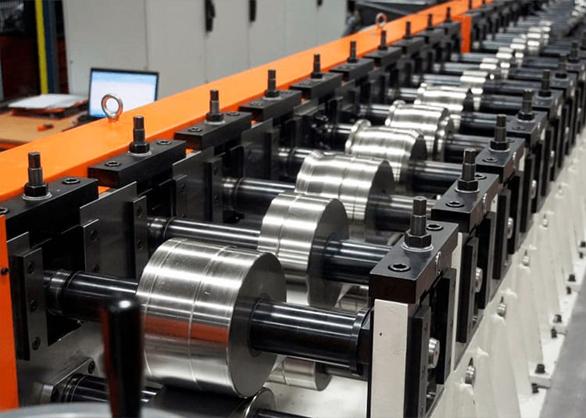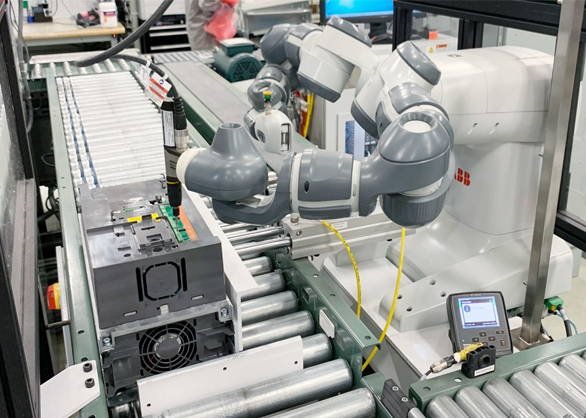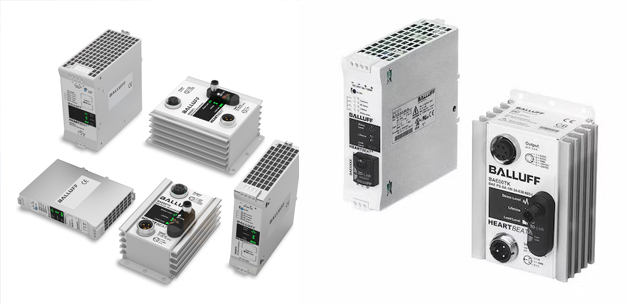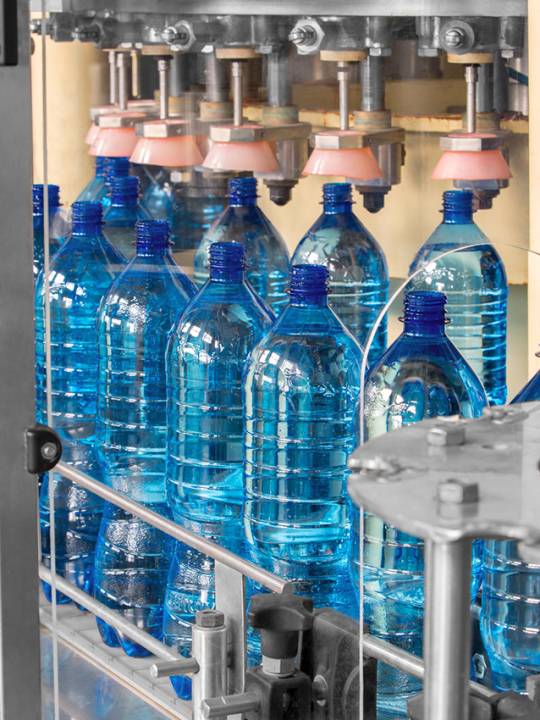Power Supply
A power supply is an essential component in electronic devices and systems, providing the necessary electrical power for operation. Here are some key features and functions of power supplies:
Key Features of Power Supplies:
Voltage Regulation: Ensures a stable output voltage, preventing fluctuations that can damage components or affect performance.
Current Output: Provides a specified amount of current to the load, which can vary based on the device's power requirements.
AC to DC Conversion: Converts alternating current (AC) from the mains supply to direct current (DC), which is used by most electronic devices.
Efficiency: High-efficiency power supplies minimize energy loss, converting more input power to usable output power while generating less heat.
Protection Features: Often equipped with short-circuit protection, overload protection, and thermal shutdown to prevent damage to the power supply and connected devices.
Modularity: Some power supplies offer modular designs, allowing users to customize and replace components as needed.
Form Factor: Available in various sizes and formats (e.g., desktop, rack-mounted, embedded) to fit different applications and space requirements.
Multiple Outputs: Many power supplies can provide multiple voltage outputs, catering to different components within a system.
Noise Filtering: Incorporates filters to reduce electrical noise and ripple, ensuring cleaner power delivery for sensitive devices.
Functions of Power Supplies:
Powering Electronic Devices: Provides the necessary voltage and current to power devices like computers, televisions, and appliances.
Supporting Circuit Operation: Supplies power to circuit components, enabling their proper functioning and performance.
Battery Charging: Some power supplies function as chargers for batteries, supplying the correct voltage and current to recharge batteries safely.
Testing and Measurement: Used in laboratories and workshops for testing electronic circuits by providing adjustable voltage and current settings.
Industrial Applications: In industrial settings, power supplies are used for machinery, automation systems, and control equipment.
Overall, power supplies are crucial in ensuring that electronic devices operate effectively, reliably, and safely.
The importance of power supplies in various applications cannot be overstated. Here are some key reasons highlighting their significance:
1. Stable Power Delivery
Power supplies ensure a consistent and stable voltage and current to electronic devices, which is essential for their proper functioning. Fluctuations in power can lead to malfunctions, data loss, or permanent damage to components. Stable power delivery is particularly critical in sensitive equipment like computers, medical devices, and communication systems.
2. Protection of Components
Many power supplies are equipped with protective features such as overload protection, short-circuit protection, and thermal shutdown. These safeguards help prevent damage to both the power supply and connected devices, extending the lifespan of electronic systems and minimizing repair costs.
3. Energy Efficiency
Efficient power supplies reduce energy loss during conversion from AC to DC, leading to lower electricity costs and a reduced environmental footprint. High-efficiency designs are particularly important in commercial and industrial settings, where power consumption can be substantial.
4. Versatility
Power supplies are used across a wide range of applications, from consumer electronics to industrial machinery. Their ability to provide multiple voltage outputs and adapt to various power requirements makes them indispensable in diverse fields such as telecommunications, healthcare, and manufacturing.
5. Supporting Innovation
As technology advances, the need for more complex and higher-performing electronic systems increases. Power supplies enable the development of innovative products by providing the necessary power for advanced features, higher processing capabilities, and enhanced functionalities.
6. Facilitating Testing and Development
In laboratories and engineering environments, power supplies are crucial for testing and developing new electronic devices and circuits. They allow engineers to simulate different operating conditions, ensuring that designs can handle various scenarios before production.
7. Battery Management
Power supplies are integral to battery management systems, allowing for safe and efficient charging of batteries used in portable devices, electric vehicles, and renewable energy systems. Proper charging is essential for battery longevity and performance.
8. Infrastructure Reliability
In critical infrastructure such as data centers, hospitals, and emergency services, reliable power supplies ensure that essential services remain operational during power outages or fluctuations. Uninterruptible power supplies (UPS) provide backup power, protecting data integrity and equipment functionality.
9. Safety Compliance
Power supplies often meet stringent safety standards and regulations, ensuring that devices operate safely and reduce the risk of electrical hazards. This compliance is essential in applications such as medical devices, where patient safety is paramount.
In summary, power supplies play a fundamental role in the functioning, safety, and efficiency of electronic systems across various sectors. Their importance continues to grow as technology evolves and the demand for reliable power sources increases.
Power supplies come with various features that enhance their functionality, reliability, and efficiency. Here are some key features commonly found in power supplies:
1. Voltage Regulation
Output Stability: Maintains a constant output voltage despite variations in input voltage or load conditions, ensuring the proper functioning of connected devices.
2. Multiple Output Options
Adjustable Voltage Levels: Provides several output voltages, often ranging from low to high, to cater to different components within a system.
Isolated Outputs: Some models offer isolated outputs for safety and noise reduction.
3. Efficiency Ratings
High Efficiency: Many power supplies are designed to operate at high efficiency (e.g., 80% or higher), reducing energy waste and heat generation.
Energy Star Compliance: Some power supplies meet Energy Star criteria for energy efficiency, further minimizing environmental impact.
4. Protection Features
Overcurrent Protection (OCP): Prevents excessive current flow, which can damage components.
Overvoltage Protection (OVP): Disconnects or limits output when voltage exceeds a specified level.
Short-Circuit Protection (SCP): Automatically shuts down the output if a short circuit is detected.
Thermal Shutdown: Shuts down the power supply if it overheats to prevent damage.
5. Cooling Mechanisms
Active Cooling: Includes fans or other active cooling solutions to dissipate heat effectively, maintaining optimal operating temperatures.
Passive Cooling: Utilizes heat sinks and ventilation without moving parts, suitable for low-power applications.
6. Form Factor and Design
Compact Size: Many power supplies are designed to be compact and lightweight, making them suitable for space-constrained environments.
Modular Design: Some models allow users to add or remove components, such as cables and connectors, for flexibility and customization.
7. Digital Displays and Interfaces
LED/LCD Displays: Some power supplies feature digital displays to show real-time voltage and current readings, enhancing user experience.
Programmable Interfaces: Advanced models may offer programmable settings for automated testing or specific operational requirements.
8. Input Voltage Range
Wide Input Range: Can operate with a broad range of input voltages, making them suitable for different geographical locations and applications.
9. Noise Filtering
Low Ripple and Noise: Incorporates filters to minimize electrical noise and ripple, ensuring cleaner power delivery for sensitive devices.
10. Reliability and Longevity
High-Quality Components: Built with durable materials and components that enhance reliability and extend the lifespan of the power supply.
Compliance with Standards: Adheres to industry safety and performance standards (e.g., CE, UL, FCC), ensuring quality and safety in operation.
These features contribute to the versatility, safety, and performance of power supplies, making them essential components in various electronic applications across industries.
Here are some common myths about power supplies, along with clarifications to set the record straight:
1. Myth: More Watts Means Better Performance
Clarification: While wattage is an important specification, it doesn’t directly correlate with performance. A power supply with higher wattage is not necessarily better if it lacks features like efficiency, voltage regulation, or safety protections. It’s essential to choose a power supply that matches the specific power requirements of your system.
2. Myth: All Power Supplies Are the Same
Clarification: Power supplies come in various types (e.g., linear, switching, uninterruptible) and qualities. They differ in efficiency, voltage regulation, output stability, and protection features. Choosing the right power supply based on application and quality is crucial for optimal performance and safety.
3. Myth: A Higher Efficiency Rating Is Not Necessary
Clarification: While some may think efficiency ratings are merely marketing gimmicks, higher efficiency power supplies reduce energy waste and heat generation. This is particularly important in commercial settings, where energy costs can be substantial, and it also contributes to the longevity of the power supply.
4. Myth: You Don’t Need Protection Features
Clarification: Many users believe that their devices are inherently safe without additional protections. However, features like overcurrent protection, overvoltage protection, and thermal shutdown are vital to prevent damage during unexpected conditions, such as power surges or component failures.
5. Myth: All Power Supplies Can Handle Any Load
Clarification: Power supplies have specific load ratings, and exceeding these ratings can lead to instability, overheating, or failure. It’s crucial to select a power supply that can handle the anticipated load of all connected components.
6. Myth: Cheap Power Supplies Are Just as Good as Expensive Ones
Clarification: While there are budget-friendly options that can perform adequately, cheaper power supplies often lack the reliability, efficiency, and protection features of higher-quality units. Investing in a reputable brand or model can prevent potential issues and costly repairs.
7. Myth: Power Supply Noise Is Not a Concern
Clarification: Electrical noise can significantly impact the performance of sensitive equipment. Low ripple and noise specifications in power supplies are critical for applications such as audio equipment, data acquisition systems, and precision instruments.
8. Myth: Power Supplies Don't Require Maintenance
Clarification: While power supplies are generally low-maintenance, they can accumulate dust and debris over time, especially in industrial environments. Regular cleaning and inspection can help ensure optimal performance and longevity.
9. Myth: The Power Supply Doesn't Affect System Performance
Clarification: The quality of a power supply can influence overall system stability and performance. Poor-quality power supplies can lead to system crashes, component failure, and data loss, especially in high-performance computing environments.
10. Myth: Power Supplies Are Only Important for Computers
Clarification: Power supplies are crucial for a wide range of applications beyond computers, including industrial machinery, medical devices, telecommunications, and consumer electronics. Their reliability and efficiency are essential in virtually all electronic systems.
Understanding these myths and clarifications can help users make informed decisions when selecting power supplies for their specific needs and applications.
The power supply industry is constantly evolving, driven by advancements in technology, shifts in consumer preferences, and increasing demands for efficiency and sustainability. Here are some notable trends in power supplies:
1. Energy Efficiency Standards
The push for higher energy efficiency is a significant trend, driven by regulations and consumer demand. Power supplies are increasingly designed to meet stringent efficiency standards, such as the 80 PLUS certification, which requires a minimum efficiency level at various loads. This trend is crucial for reducing energy consumption and minimizing environmental impact.
2. Renewable Energy Integration
With the growing emphasis on renewable energy sources, power supplies are increasingly being designed to work with solar panels, wind turbines, and battery storage systems. Power converters and inverters that efficiently manage the conversion and distribution of energy from renewable sources are becoming more prevalent.
3. Smart Power Management
The incorporation of smart technology into power supplies is on the rise. Features such as remote monitoring, diagnostics, and control allow users to manage power usage effectively, enhancing energy savings and operational efficiency. IoT-enabled power supplies enable real-time data collection and analysis, leading to improved performance.
4. Miniaturization and Compact Designs
There is a trend toward smaller, more compact power supplies without sacrificing performance. This miniaturization is driven by the demand for space-saving designs in consumer electronics, automotive applications, and industrial equipment. Advancements in semiconductor technology, such as the use of GaN (Gallium Nitride), contribute to this trend.
5. Increased Focus on Safety Features
As electronic devices become more complex and interconnected, there is a growing emphasis on safety features in power supplies. Enhanced protection mechanisms, such as overvoltage, overcurrent, and thermal protection, are being integrated to ensure safe operation and protect sensitive components.
6. Customizable and Modular Power Solutions
The demand for flexibility has led to a rise in customizable and modular power supply solutions. Users can configure power supplies to meet specific requirements, adding or removing modules based on changing needs. This trend is particularly popular in industrial applications where requirements may evolve over time.
7. Sustainability and Eco-Friendly Designs
Environmental sustainability is becoming a key consideration in power supply design. Manufacturers are focusing on eco-friendly materials, recyclable packaging, and reduced carbon footprints during production. This trend aligns with global efforts to combat climate change and promote sustainable practices.
8. High-Performance Power Supplies
The demand for high-performance computing, especially in areas like gaming, AI, and data centers, drives the need for power supplies capable of delivering high wattages with stability and efficiency. These power supplies often include features like modular cables and customizable RGB lighting to enhance user experience.
9. Wireless Power Transfer
The rise of wireless charging technologies is influencing power supply design, particularly in consumer electronics and automotive sectors. Power supplies that support wireless charging protocols are increasingly common, catering to the growing preference for convenience and ease of use.
10. Rapid Technological Advancements
Continuous advancements in semiconductor technology, materials, and circuit design are leading to the development of more efficient, reliable, and compact power supplies. Innovations such as digital power management and advanced control algorithms are enhancing performance across various applications.
These trends reflect the evolving landscape of power supplies, emphasizing the importance of efficiency, safety, and adaptability in meeting the diverse needs of consumers and industries. As technology continues to advance, these trends are likely to shape the future of power supply design and functionality.
A power supply is a device or component that provides electrical energy to an electrical load. It converts electrical energy from a source (like the electrical grid, batteries, or renewable energy sources) into a usable form for powering devices, systems, or circuits. Here are some key aspects of power supplies:
1. Types of Power Supplies
Linear Power Supply: Provides a steady output voltage by using a linear regulator. It is simple and generates less noise but is less efficient and can be larger.
Switching Power Supply: Converts voltage using a switching regulator. It is more efficient, compact, and widely used in modern electronics.
Uninterruptible Power Supply (UPS): Provides backup power to devices during outages and maintains power continuity.
AC-DC Power Supply: Converts alternating current (AC) from the wall outlet into direct current (DC) used by most electronic devices.
DC-DC Converter: Converts one DC voltage level to another, allowing for different voltage levels required by various components.
2. Functions
Voltage Regulation: Ensures the output voltage remains stable despite variations in input voltage or load conditions.
Power Conversion: Transforms electrical energy from one form to another (e.g., AC to DC).
Power Distribution: Distributes power to multiple devices or components within a system.
3. Applications
Power supplies are used in various applications, including:
Consumer electronics (e.g., computers, televisions, smartphones)
Industrial machinery and equipment
Telecommunications systems
Medical devices
Automotive systems
4. Importance
A reliable power supply is crucial for the proper functioning of electronic devices. It ensures that devices receive the correct voltage and current necessary for optimal performance, enhancing the longevity and reliability of the equipment.
In summary, a power supply plays a vital role in converting and delivering electrical energy to power various devices and systems, making it a fundamental component in electronics and electrical engineering.
Effectiveness is a term that describes the degree to which something successfully produces a desired outcome or achieves a specific goal. It is a measure of success in meeting objectives and can apply across various fields, including business, education, healthcare, and personal development. Here are some key aspects and considerations related to effectiveness:
Power supplies are essential components in a wide range of industries, providing the necessary electrical energy to operate various devices and systems. Here are some key applications of power supplies across different sectors:
1. Industrial Automation
Control Systems: Power supplies are vital for powering control systems used in manufacturing and industrial processes. They supply energy to programmable logic controllers (PLCs), sensors, and actuators, ensuring smooth operation and automation of production lines.
Robotics: In robotics, power supplies provide the necessary energy for robotic arms, motors, and controllers, facilitating precise movements and functions in tasks such as assembly, welding, and packaging.
2. Telecommunications
Networking Equipment: Power supplies are critical for telecommunications infrastructure, powering routers, switches, and base stations. Reliable power ensures continuous connectivity and service delivery for voice and data communications.
Data Centers: In data centers, power supplies support servers and storage systems. Uninterrupted power supply (UPS) systems are often employed to protect data integrity and ensure operational continuity during power outages.
3. Healthcare
Medical Equipment: Power supplies are essential for various medical devices, including imaging machines (like MRI and CT scanners), patient monitors, and infusion pumps. Reliable power ensures these devices function accurately and safely.
Laboratory Equipment: In clinical laboratories, power supplies are used in diagnostic equipment, analyzers, and research instruments, providing the necessary energy for accurate testing and analysis.
4. Consumer Electronics
Charging Devices: Power supplies are found in chargers for smartphones, laptops, and other personal electronic devices. They convert AC power from the wall into DC power suitable for charging batteries.
Home Appliances: Various home appliances, such as refrigerators, microwaves, and televisions, rely on power supplies to operate efficiently, ensuring convenience and functionality for consumers.
5. Aerospace and Defense
Avionics Systems: Power supplies are critical in aircraft for powering avionics systems, navigation equipment, and communication devices. Reliable power is essential for safe operation and compliance with aviation standards.
Military Equipment: In defense applications, power supplies are used in various military equipment, including communication systems, surveillance devices, and unmanned aerial vehicles (UAVs), where reliability and performance are paramount.
6. Renewable Energy
Solar Power Systems: Power supplies play a key role in solar energy systems, converting the DC electricity generated by solar panels into AC power for use in homes and businesses. They also manage battery storage systems.
Wind Energy Systems: In wind energy applications, power supplies are used to convert and manage the electricity generated by wind turbines, ensuring efficient energy distribution.
7. Transportation
Electric Vehicles (EVs): Power supplies are crucial for charging infrastructure, providing the necessary energy to charge electric vehicles efficiently. They also play a role in the vehicle’s onboard power systems for various electronics.
Railway Systems: Power supplies support the electrification of rail networks, powering trains and station systems, ensuring safe and efficient transportation.
8. Lighting and Signage
LED Lighting: Power supplies are used in LED lighting systems, converting and regulating voltage to ensure optimal performance and energy efficiency in commercial and residential applications.
Digital Signage: In advertising and information displays, power supplies provide the necessary energy for screens and lighting, enhancing visibility and impact.
Conclusion
Power supplies are integral to numerous industries, providing the energy required for various applications. Their reliability, efficiency, and adaptability make them essential components in industrial automation, telecommunications, healthcare, consumer electronics, aerospace, renewable energy, transportation, and lighting. As technology advances, the demand for innovative and efficient power supply solutions continues to grow, driving developments across multiple sectors.




